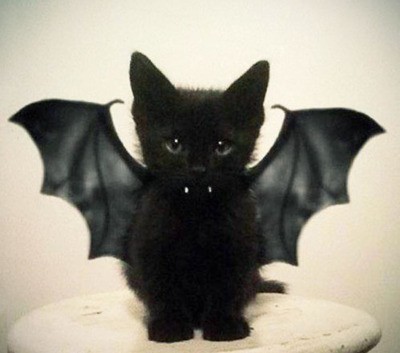Science
Related: About this forumMy sister just had a new Smilodon species named after her!
March 14th, 2013
GAINESVILLE, Fla. — A University of Florida researcher has described a new genus and species of extinct saber-toothed cat from Polk County, Fla., based on additional fossil acquisitions of the animal over the last 25 years.
The 5-million-year-old fossils belong to the same lineage as the famous Smilodon fatalis from the La Brea Tar Pits in Los Angeles, a large, carnivorous apex predator with elongated upper canine teeth. Previous research suggested the group of saber-toothed cats known as Smilodontini originated in the Old World and then migrated to North America, but the age of the new species indicates the group likely originated in North America. The study appeared online in the journal PLOS One Wednesday.
“Smilodon first shows up on the fossil record around 2.5 million years ago, but there haven’t been a lot of good intermediate forms for understanding where it came from,” said study co-author Richard Hulbert Jr., vertebrate paleontology collections manager at the Florida Museum of Natural History on the UF campus. “The new species shows that the most famous saber-toothed cat, Smilodon, had a New World origin and it and its ancestors lived in the southeastern U.S. for at least 5 million years before their extinction about 11,000 years ago. Compared to what we knew about these earlier saber-toothed cats 20 or 30 years ago, we now have a much better understanding of this group.”
Hulbert helped uncover fossils of the new genus and species, Rhizosmilodon fiteae, from a phosphate mine during excavations in 1990. The species was named after Barbara Fite of Lutz, Fla., who in 2011 donated one of the critical specimens used for the new description and allowed UF scientists to make casts of two other partial jaws in her collection.
http://www.flmnh.ufl.edu/pressroom/2013/03/14/uf-researcher-describes-new-5-million-year-old-saber-toothed-cat-from-florida/

Saber-toothed cat species, holotype specimen, is pictured in the foreground and the paratype specimen is pictured in the background.
Florida Museum photo by Jeff Gage
She found the paratype specimen jaw in the photo.
longship
(40,416 posts)The Le Brea tar pits are awesome. It's one of the best museums for natural history because it shows the research in action. The whole area is full of big digs where mammoths and Smilidons are being dug up daily. Tar appears out of the ground anywhere in the vacinity.
It's an awesome place, smack dab in the middle of Los Angeles.
Lookie here:
Page Museum
hunter
(38,309 posts)... trigger some powerful memories in me.
I totally agree with you, it's an awesome place. I'd put it above Disneyland as a place to visit on a vacation to Southern California.
DreamGypsy
(2,252 posts)...your contributions to paleontology are immortalized here
The Smilodon smiles on you...
csziggy
(34,135 posts)And in the phosphate pits there. She has an amazing collection and has found a lot of unique fossils. It's just a hobby with her that she spends a lot of time on now that she is retired.
I'm glad she is getting recognition!
ZRT2209
(1,357 posts)csziggy
(34,135 posts)In the peninsular Florida area. She's not into the research part so she lets the academics study her fossils and write them up. She loves being outside doing the collecting.
ZRT2209
(1,357 posts)aquart
(69,014 posts)TxDemChem
(1,918 posts)Skinner
(63,645 posts)csziggy
(34,135 posts)I just talked to her and there will be another paper coming out with another new species that she found the paratype fossil for. She doesn't know if they will name it for her, too, though.
She's gotten into places where few fossil hunters had access to in the phosphate pits in Central Florida, partly because she went to high school with the workers and partly because our Dad was a mining engineer there. She's found species in peninsular Florida that were not thought to live that far south. For an amateur fossil hunter, she has an amazing collection most of which she found and excavated herself.
I'm very proud of my older sister!
Spitfire of ATJ
(32,723 posts)
csziggy
(34,135 posts)Marrah_G
(28,581 posts)BrotherIvan
(9,126 posts)Good on her!
littlemissmartypants
(22,629 posts)Smilodon
Smilodon sometimes called sabre-toothed cat, is an extinct genus of large saber-toothed cats that lived between approximately 2.5 million to 10,000 years ago in North and South America. They are called "saber-toothed" for the extreme length of their maxillary canines. The La Brea tar pits in California trapped hundreds of Smilodon in the tar, possibly as they tried to feed on mammoths already trapped. The Natural History Museum of Los Angeles County has many of their complete skeletons. Despite the colloquial name of "saber-toothed tiger", Smilodon is not closely related to a tiger, which belongs to another subfamily, the Pantherinae; Smilodon is a member of the extinct subfamily Machairodontinae. Among the largest felids, the heaviest specimens of this massively built carnivore may have reached a body mass of up to 400 kg/880 pounds.
http://www.dinosaurpicturesonline.com/5_afterdinosaurs.htm
csziggy
(34,135 posts)From the abstract to the peer reviewed article, Wallace SC, Hulbert RC Jr (2013) A New Machairodont from the Palmetto Fauna (Early Pliocene) of Florida, with Comments on the Origin of the Smilodontini (Mammalia, Carnivora, Felidae). PLoS ONE 8(3): e56173. doi:10.1371/journal.pone.0056173
http://www.plosone.org/article/info%3Adoi%2F10.1371%2Fjournal.pone.0056173
littlemissmartypants
(22,629 posts)secondvariety
(1,245 posts)csziggy
(34,135 posts)That will be coming out eventually. She doesn't know if they will name either of those for her or when the scientific papers on them will be released.
Here is what she sent me:
I realized right away that I have an eye for this-never dig with a shovel, just walk around and find them!
